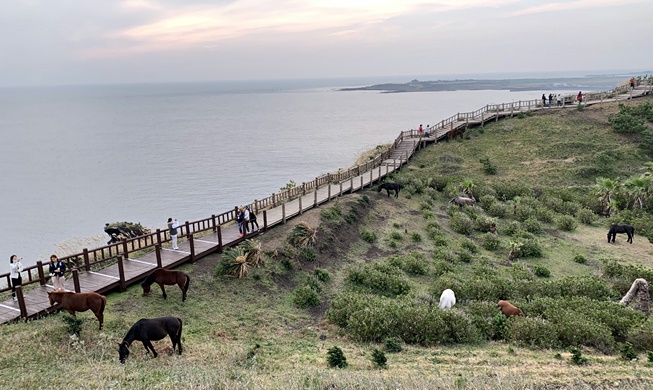Yu Hong-june, a prominent art historian in Korea and chair professor at Myongji University in Seoul, said in his book "My Exploration of Cultural Heritage," "The more you know, the more you see." Even if a place is famous or on a plain ordinary day, a landscape can be seen differently depending on one's knowledge and perspective.
This is the first of a Korea.net series on domestic cultural and tourist spots this year. For famous places easily found on the internet, we approach them from new perspectives focused on people and their stories. In addition, we cover ordinary spots often overlooked to promote them as potential tourist attractions. Thus readers can discover attractive aspects of the nation hidden throughout the country.
By Yoon Hee Young
Namhae-gun County, Gyeongsangnam-do Province
Videos = Lee Jun Young
■ Hidden charm 1┃Columnar joints, Namhae's unexplored spectacle
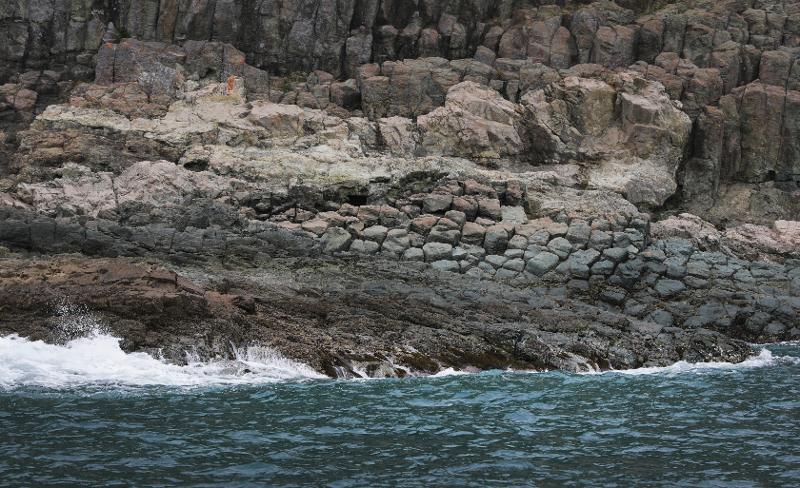
Columnar joints in the village of Yanga-ri in Sangju-myeon Township, Namhae-gun County, Gyeongsangnam-do Province, used to be called "keyboard rocks" by village residents, as the joints resemble a piano keyboard. (Lee Jun Young)
When thinking of a prime spot to view columnar joints in Korea, many might say Jeju Island. Yet Namhae-gun County in Gyeongsangnam-do Province also has such geological structures that look as majestic as those in Jeju. Located 20 minutes by boat from Byeongnyeonhang Port in the village of Yanga-ri in the county's Sangju-myeon Township, the columnar joints are shaped like pentagonal or hexagonal columns as they cooled after a volcanic eruption. Though many Namhae natives are unfamiliar with the site, it is renowned as a hidden spectacle among Yanga-ri residents.
Capt. Choe Gil-dong, who drove the boat toward the scenic view point for the columnar joints, said, "Residents in the past used to call it 'keyboard rocks' since they didn't know they were columnar joints and because the rocks resemble a piano keyboard."
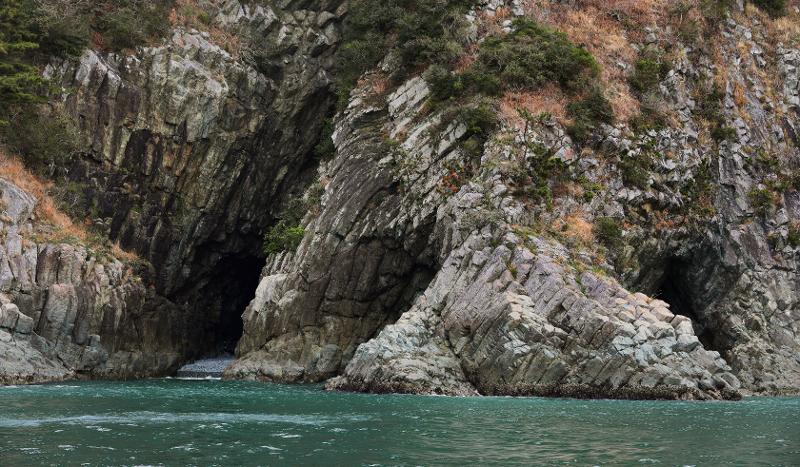
A turtle-shaped cave and a "dragon king rock" are among columnar joints in the village of Yanga-ri. (Lee Jun Young)
■ Hidden charm 2┃Daraengi Village: built with sweat and tears of Namhae peasants
Included in the CNN list of "50 beautiful places to visit in Korea," Daraengi Village in Nam-myeon Township is Namhae's leading tourist attraction. Yet few know of the hardship and sorrow suffered by the villagers.
The village is a coastal hamlet with no boats because of the steep cliff by the ocean. Due to the geographically unfavorable condition for fishing, villagers had to cultivate the barren land for agriculture. The terraced rice paddies were built by "mothers" in Namhae who carried stones and rocks from Seolheulsan Mountain to form a high stonework. Namhae culture and tourism commentator Son Hea-ryeon said, "Daraengi Village retains the toughness of the village mothers," adding, "They carved the hillside and cultivated infertile land with their bare hands to make the land arable."

The small rice paddy shows how hard farmers in the village strived to extend the farmland. (Lee Jun Young)
The small rice paddy called satgatbaemi in the corner has an interesting back story. Once upon a time, a farmer cultivated 10 patches but discovered one missing during his daily count. Confused, he counted them again and again but couldn't find it. As he gave up and lifted his satgat (traditional hat made of woven reeds or bamboo) to go home, he found the missing patch underneath his hat. The patch was so small that it was hidden underneath his hat. The story tells just how earnest and diligent Namhae farmers were, as shown in using the smallest space as farmland.
■ Hidden charm 3┃Windbreak Forest of Mulgeon-ri with 300 years of community history
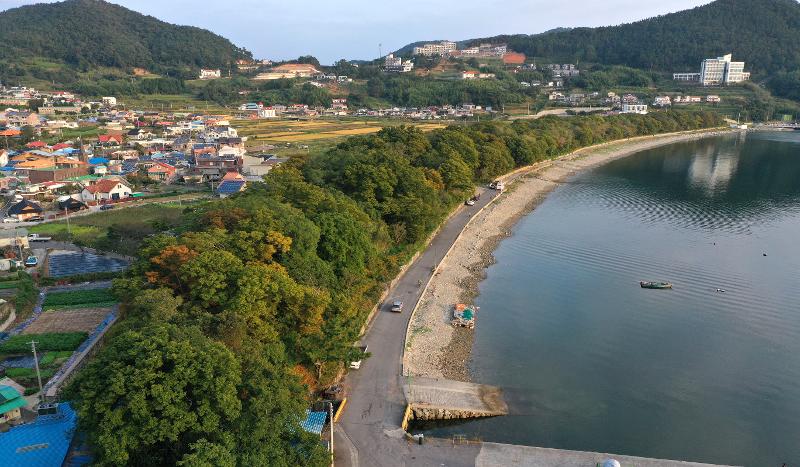
Windbreak Forest in the village of Mulgeon-ri on the coast of Samdong-myeon Township is far more than a mere forest that protects against wind and tide. (Namhae Foundation for Tourism and Culture)
The next destination was more about relaxation and composure in nature. Windbreak Forest in the village of Mulgeon-ri on the coast of Samdong-myeon Township is an artificial forest created in the 17th century to protect the nearby farmland and village from waves and wind. With an estimated 10,000 trees spanning nearly 100 species and planted along the curved coast, the forest is popular among tourists seeking a secluded walking trail.
The forest has a bigger role than simply protecting the village from strong sea winds and waves. Every year on Oct. 15 under the lunar calendar, village residents hold the annual ritual Dongje in front of the forest's oldest retusa fringe tree standing at the entrance of the woods. The event wishes for the well-being and peace of the village and bountiful catches for the fishing industry.
Long-time village resident Kim Jae-myung, 79, said, "Three meticulously selected officials hold the ritual with all their hearts to wish for the well-being of the village," adding, "After the ritual, the villagers all gather round to hold a feast with the food served for the ceremony. It's not just a ritual but more of a festival long passed down to the villagers."
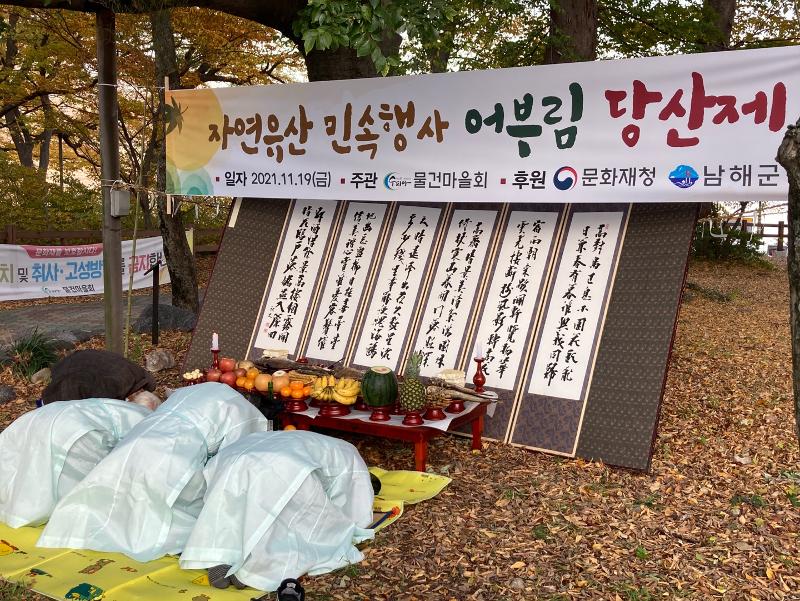
Three officials on Nov. 19 (Oct. 15 in the lunar calendar), 2021, hold the annual ritual Dongje in the village of Mulgeon-ri. (Namhae Foundation for Tourism and Culture)
A story passed down orally says that back in the day, the coastal village suffered serious damage from storms after part of the forest was cut down by people. The village has since made it a rule to preserve the forest by fining those who try to cut down trees there. The forest preserves a long history of the village community that remains alive and breathing.
■ Hidden charm 4 ┃ 'Soeseom over Jeju': Why did a working couple move to Namhae?
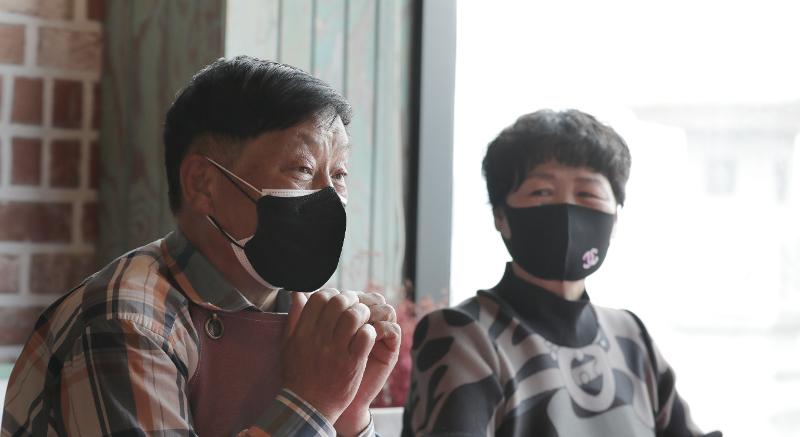
Cho Hea-soon and Jeong Wang-si own a cafe and pension in front of Sodo Island aka Soeseom. They said they fell in love with Soeseom at a hoe (raw fish) restaurant that they stumbled on by chance, which eventually led them to buy the building and move to the island. (Lee Jun Young)
Cho Hea-soon and Jeong Wang-si, co-owners of a cafe and pension in front of Sodo Island aka Soeseom, a five-minute drive from the town of Namhae-eup, are a middle-aged couple who had originally planned to move to Jeju Island and bade farewell to 30 years of city life. One day, Cho had dinner at a hoe (raw fish) restaurant near Soeseom during a visit to Namhae and was captivated by the island's landscape, as Soeseom was connected to the main island years ago. "After falling in love with the island, I called my husband, who had moved to Jeju Island in advance, to come to Namhae," Cho said. "I bought the restaurant building right away to renovate it as a cafe on the first floor and as a pension on the second and third floors."
Cho said, "The island's views differ in the morning and at sunset and dawn. My favorite time is before sunrise, as it shows the island as calm as a lake."
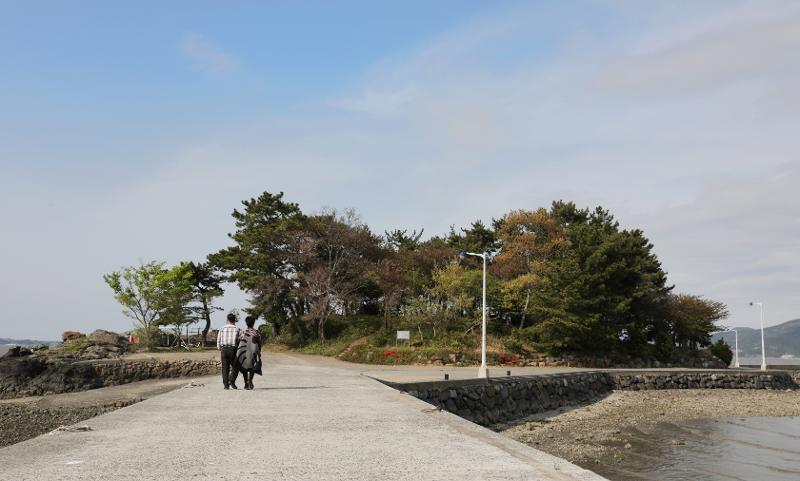
Residents Cho Hea-soon and Jeong Wang-si walk on the path entering Sodo Island. (Lee Jun Young)
hyyoon@korea.kr
![[Hidden charms of Korea: Namhae] ① Trip for thinking about nothing](/upload/content/image/593df28b85e54b1e8dd6c086d9fa6b3e_20220427151613.jpg)
![[Hidden charms of Korea: Namhae] ③ Exploring 'treasure island'](/upload/content/image/74d2c17bb0b14fba836dd57fb7a2acfe_20220426171319.jpg)
